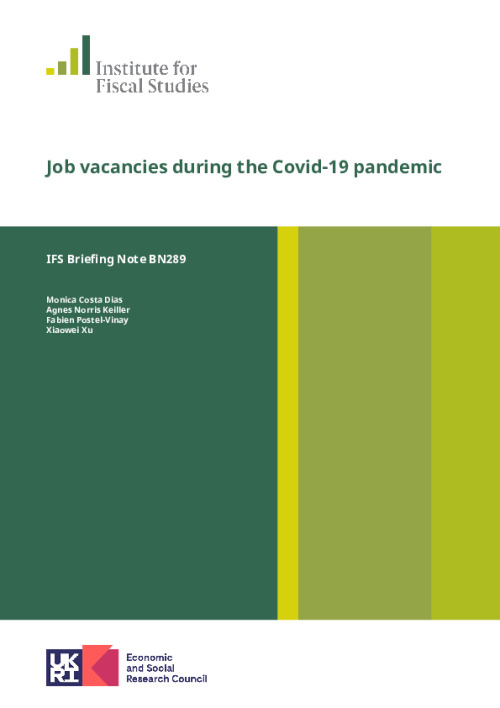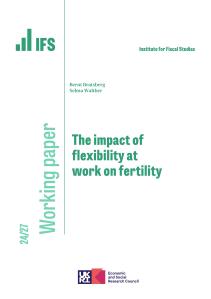Job vacancies are an early indicator of economic activity. When a firm’s demand for labour increases, it may post new vacancies some time before these vacancies are actually filled; conversely, when labour demand falls, a firm may stop recruitment efforts before an effect on employment is felt. Tracking the evolution of vacancies allows us to see where labour demand has fallen most during the pandemic, and where it is tentatively picking up again, much faster than official employment statistics allow.
In this note, we present virtually real-time information from a daily census of all job adverts posted on Find a Job (FAJ), a recruitment website maintained by the Department for Work and Pensions (DWP).
Key findings
- By the time the lockdown was announced, firms had stopped posting new vacancies almost entirely.New postings on 25 March were just 8% of their levels in 2019.
- Vacancies fell across the wage distribution.The fall was sharpest in low-paid occupations directly affected by social distancing measures, but new vacancies for higher-paid jobs in legal and managerial professions also saw falls of over 60% relative to 2019.
- There have been some tentative signs of recovery since mid April, but this has been entirely driven by vacancies in health and social care. Health and social care vacancies rebounded from half their 2019 levels in the first week of April to 85% of their 2019 levels in the first week of May. In all other occupations, new vacancies in the first week of April were 21% of their 2019 levels, and were still only 26% of their 2019 levels in the first week of May.
- Whilst the initial drop in job postings was evenly distributed across more and less deprived areas, the recovery in health and social care vacancies has been concentrated in more affluent areas. New health and social care vacancies in the least deprived fifth of local authorities (measured by their Index of Multiple Deprivation) were 15% lower than their 2019 levels in the first week of May, whilst those in the most deprived fifth were still 35% lower.
- The health and social care occupations in which vacancies are recovering pose relatively high health risks. They are relatively difficult to do from home, involve working in close physical proximity to others and are more exposed to disease.
- The new jobs that are emerging require high levels of preparation.Jobs in health and social care require a high level of training, but even outside healthcare, labour demand has recovered more in occupations that require higher levels of preparation. This suggests that workers who have been furloughed or made unemployed are likely to struggle to fill vacancies in areas where labour demand is recovering.













